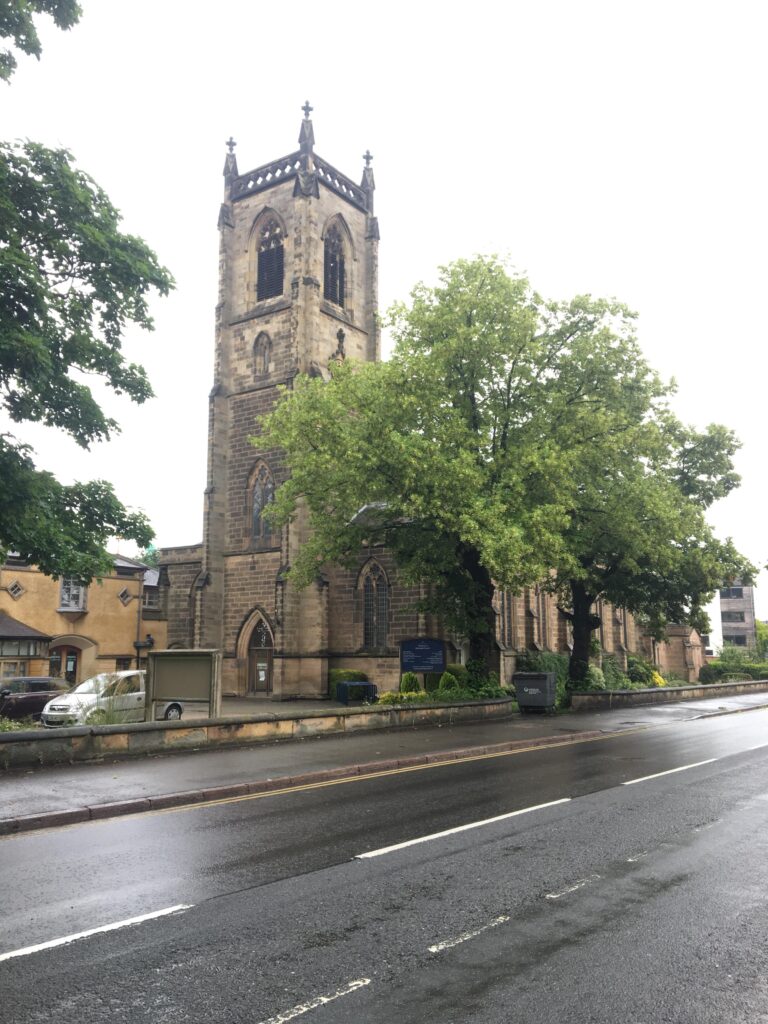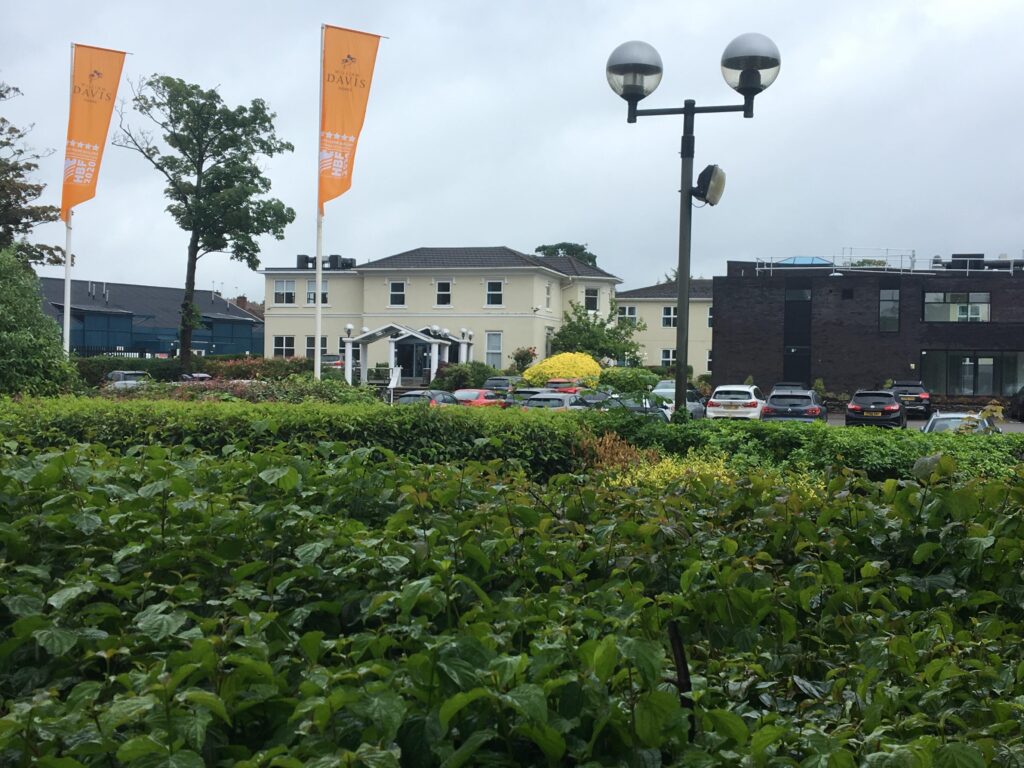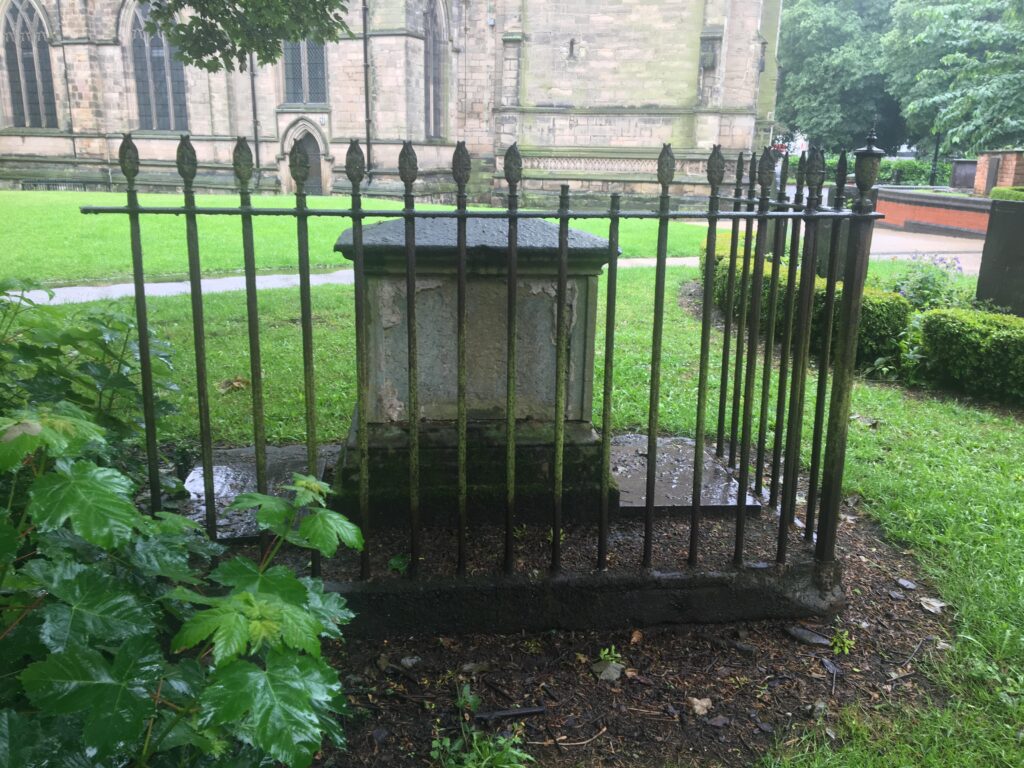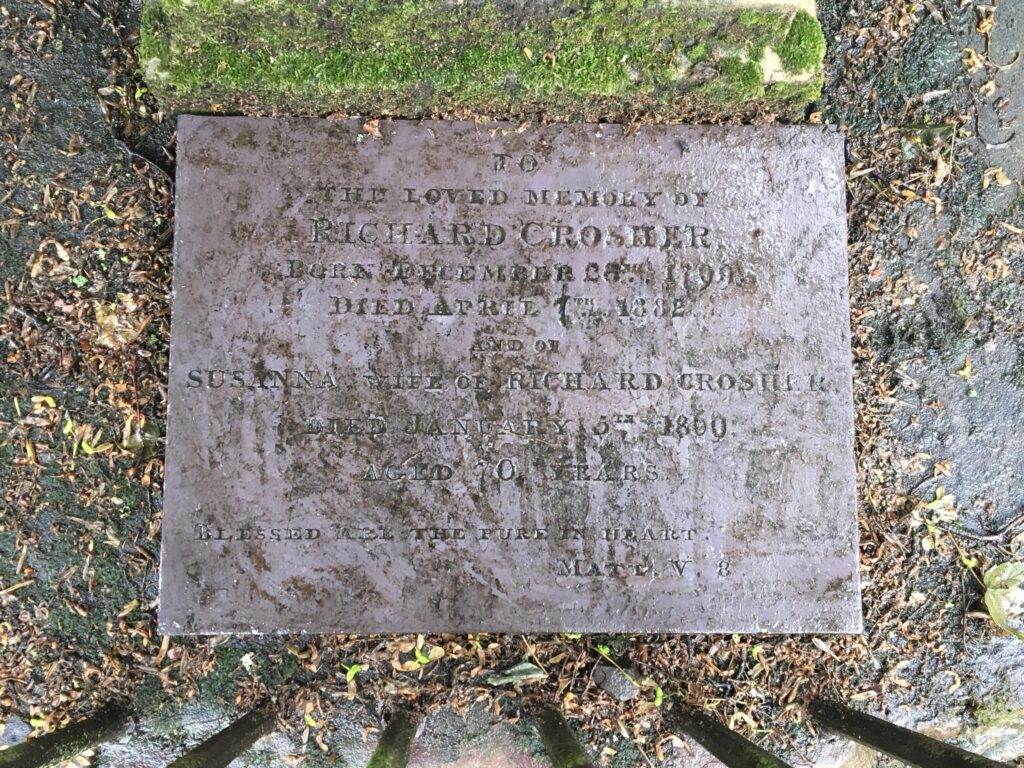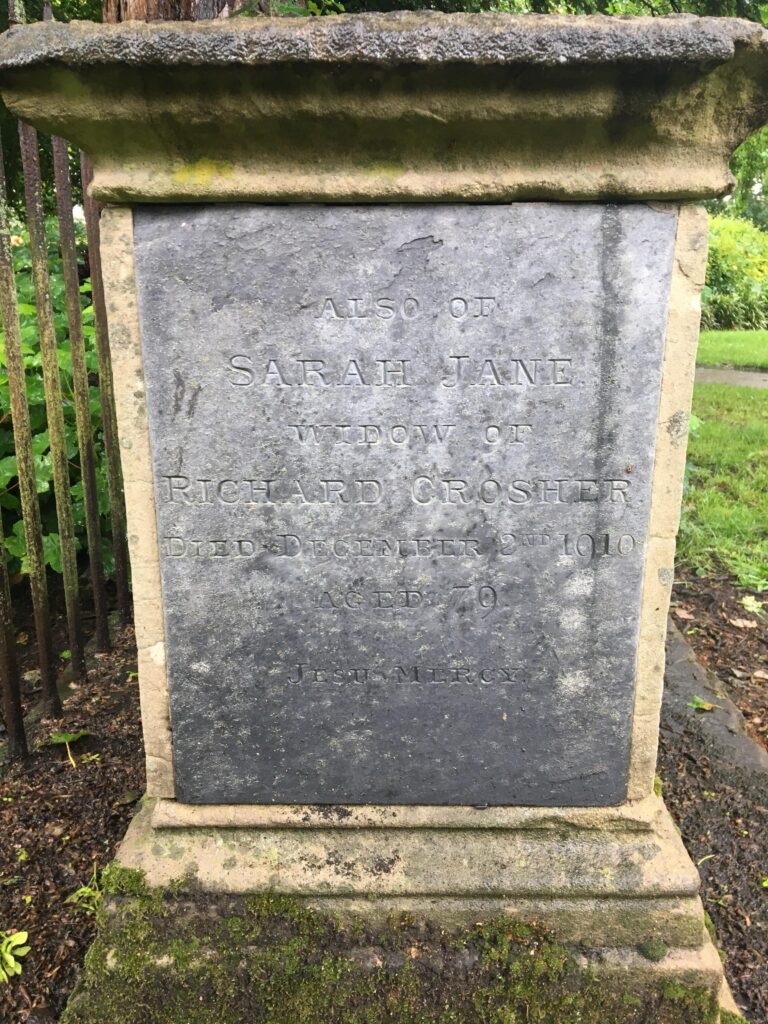Richard Crosher: businessman, philanthropist and churchwarden
21 June 2020
Loughborough’s population grew so rapidly in the 1820s and ’30s it was decided that a new parish was needed.
Emmanuel College, Cambridge – patron of the living of Loughborough – agreed that All Saints Parish could be split in two and that the new parish could take the college’s name. Thus Emmanuel Parish was born and the Revd William Holme, Rector of All Saints at that time, was tasked with dividing up All Saints.
In doing so, he sought the support of Richard Crosher, a parishioner and philanthropist who was active in the life and work of All Saints parish and the wider town.
Born in the village of Newbold Verdon on 28 December 1799, Richard is recorded in Pigot’s Directory of 1828/9 year as a tea and grocery dealer with premises in Loughborough Market Place.
He was also a wholesaler in partnership with a Mr Clarke, winning contracts with the Poor Law Guardians – an indication he was trustworthy – for the supply of flour. Business success enabled Richard to support many causes in the town, as well as to have a handsome house built close to Emmanuel church. This house – Forest Field – still exists today, being the core of William Davis’s headquarters on Forest Road.
Emmanuel parish would need hard-working churchwardens to support the new Rector and one position was given to Richard Crosher, as can be seen in an advertisement from the Leicestershire, Nottinghamshire and Derby Telegraph, Loughborough’s local newspaper at that time:
Emmanuel Church. The inhabitants of Emmanuel parish are hereby informed that every arrangement is now made for the celebration of all the Offices of the Church; namely, Baptisms, Marriages, Funerals, etc.
Loughborough being divided into two parishes for all ecclesiastical purposes, it is requisite for persons residing in each division to confine themselves for the above purposes to their own parish church.
Churchwardens Thomas Warner, Richard Crosher, December 7 1838.
Sadly, by 1838 Richard and his wife Susanna had lost both their children – four-month-old Susannah in May 1830 and six-year-old Edward in November 1834. It’s possible that this sadness may have influenced how Richard used the time not taken up by his business.
He was a long-standing member of the Management Committee of the Governors of Loughborough Hospital, acting as one of two ‘visitors’ whose duties included inspecting hospital accounts and authorising payments each week.
He was part of a group of people working in the early 1870s towards setting up a convalescent home for poor patients recovering from treatment in Loughborough Hospital, and one of the first members of the administrative committee when it opened on Maplewell Road in Woodhouse Eaves.
He was elected by the town’s ratepayers to serve on the Loughborough Board of Health, created to deal with the above-average death rate in Loughborough caused by inadequate sanitation.
And he was an early advocate of education for girls, arguing strongly against allowing the proposed ‘New Scheme for Burton’s Charity’ to absorb funding from the Hickling Charity, bequeathed in 1683 to pay for schooling for poor girls. (The motion, however, was carried through.)[1]
Richard Crosher didn’t ignore the needs of the poor of Emmanuel parish, either, recorded as donating coals for them in February 1875. In the same year he supported the UK Alliance, a temperance organisation established by prominent business people of Loughborough.
Richard’s wife Susanna died on 5 January 1869 at the age of seventy and was buried in the same plot in All Saints graveyard as her two children. Richard later remarried, his second wife Sarah Jane some 32 years younger his junior.
Richard Crosher died on 7th April 1882. Perhaps significantly, only Richard Crosher and the Rev Robert Bunch – the first Rector of the ‘new’ parish – have memorials in the chancel of Emmanuel church. Richard’s memorial on the north wall of the chancel is a stylised portrait made by T. Brock of London, chosen and paid for by his wife, Sarah Jane. It reads:
“In affectionate remembrance and with tender love this monument is inscribed to the dear memory of Richard Crosher of Forest Field by his second wife Sarah Jane Crosher. He was born on December 28th 1799 and died on Good Friday, April 7th 1882.
In thy presence is the holiness and by thy right hand there is pleasure for ever more. Psalm XVI Verse 12.”
Richard was buried in the family plot in All Saints Churchyard. Sarah Jane Crosher died on 2nd December 1910 aged seventy-nine and was buried with her husband.
Alison Mott
Taken from ‘Richard Crosher’ by Ian Keil, from the newsletter of Loughborough Archaeological and Historical Society, Spring 2011.
See the original article here.
[1] As reported in The Loughborough Advertiser in March 1873
